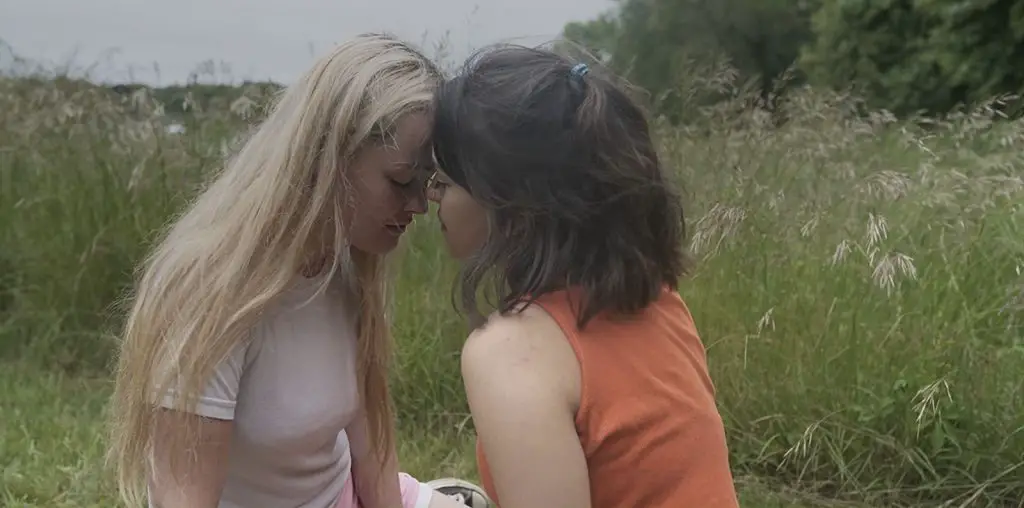
NEW TO VIRTUAL CINEMAS! Writer-director Catalina Arroyave Restrepo encapsulates so much about the universal experience of being a teenager in Days Of The Whale, that it is amazing this is her first film. Set in Medellin, Colombia, we meet a group of revolutionaries who gather together in an art collective managed by Lucas (Carlos Andrés Fonnegra). The collective centers its activities on creating revolutionary zines and street art. Two teenage members of the collective; Cristina (Laura Isabel Tobón Ochoa) and Simón (David Escallón) spend a lot of time together painting at night on the Medellin streets and grow close. Most of the action of the film centers around them.
Simón comes from a more working-class background and lives with his grandmother. As a child, he ran in the same circles with some kids who are now in a gang that patrols the streets of the neighborhood where the art collective is located. The gang is extorting money from Lucas for “protection.” They get angry when the collective produces a pamphlet which has artwork speaking out against the gang and their protection racket. Simón tries to rationalize with his former friend, but it doesn’t go the way he hoped.

“…an actual whale stuck in a canal that serves as a visual metaphor for the progress of Cristina and Simón’s young lives…”
Cristina is from an upper-middle-class family. Her mother is a journalist who moved to Spain because she was under threat from the very same gang which is haunting the collective. Cristina now lives with her father and his much younger wife. She had plans to join her mother in Spain, but as she finds herself falling in love with Simon, she keeps prolonging her departure.
Where’s the whale? First of all, there’s a few. The most interesting one being an actual whale stuck in a canal that serves as a visual metaphor for the progress of Cristina and Simón’s young lives, as well as the collective’s attempt to neutralize the threat of the gang. Secondly, Cristina’s mother’s favorite animal is the whale, and in her new home in Spain, she has a painting of a whale in Cristina’s soon to be new room. The most important whale of the film though is the massive graffiti whale across the street from the whale which is an act of dissent. Formerly on the same wall, the gang had spray painted “snitches get stitches” en Espanol. Simón and Christi had painted it over with white paint. The gang then tagged it. At the end of the film, we see the finished whale in all its glory.
Days of The Whale is a quiet, beautiful coming of age story. It shares the same atmospheric qualities as films such as Mid90s and Paranoid Park. It has a great score and soundtrack. It also leaves you with a lot of questions, which could be annoying to some viewers, but I personally enjoy it when I’m left wondering when the credits roll.

"…encapsulates so much about the universal experience of being a teenager..."



How do you watch the film?
It’s playing in virtual cinemas. Lookup a local art-house theater and most likely they’ll have it available for streaming.